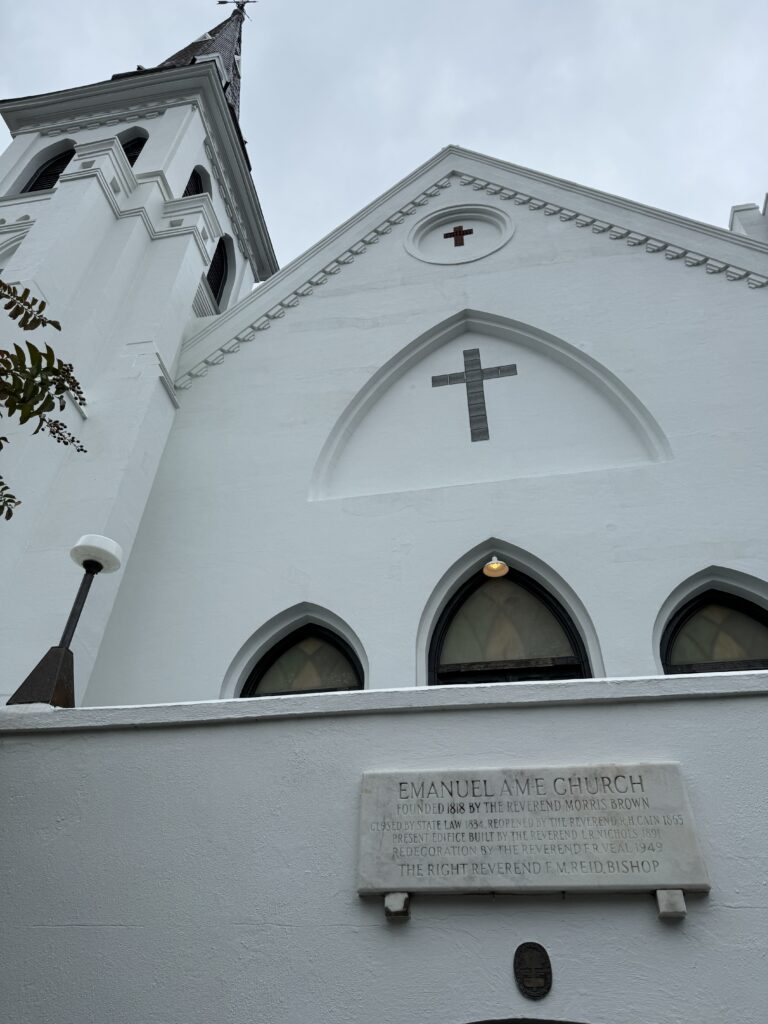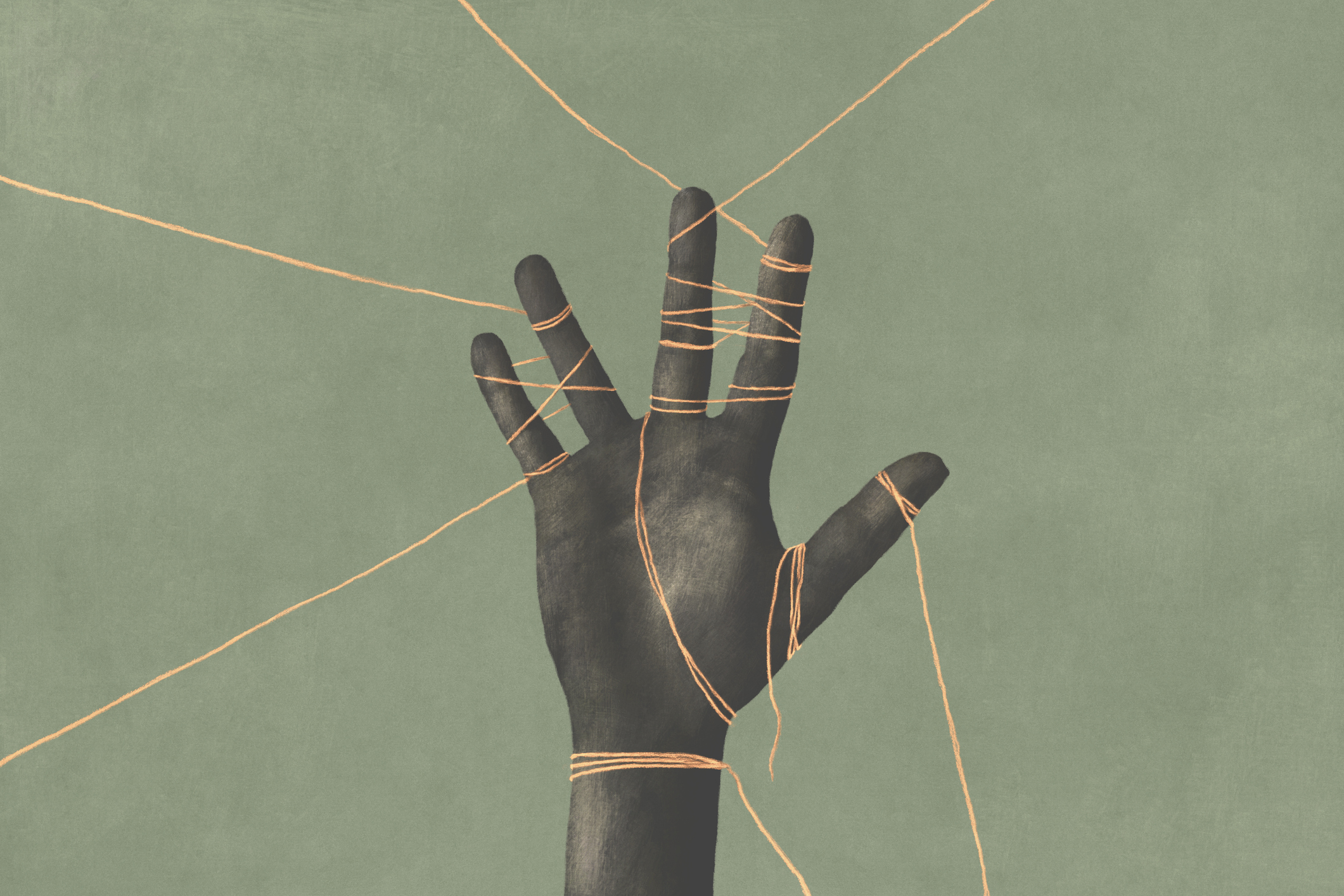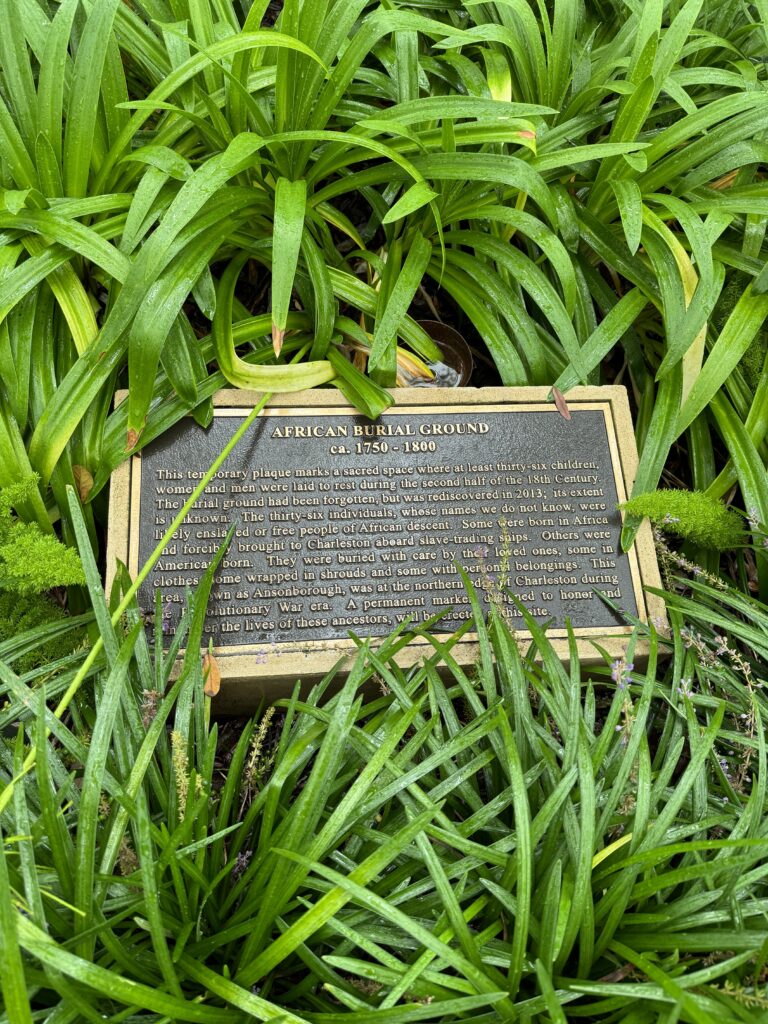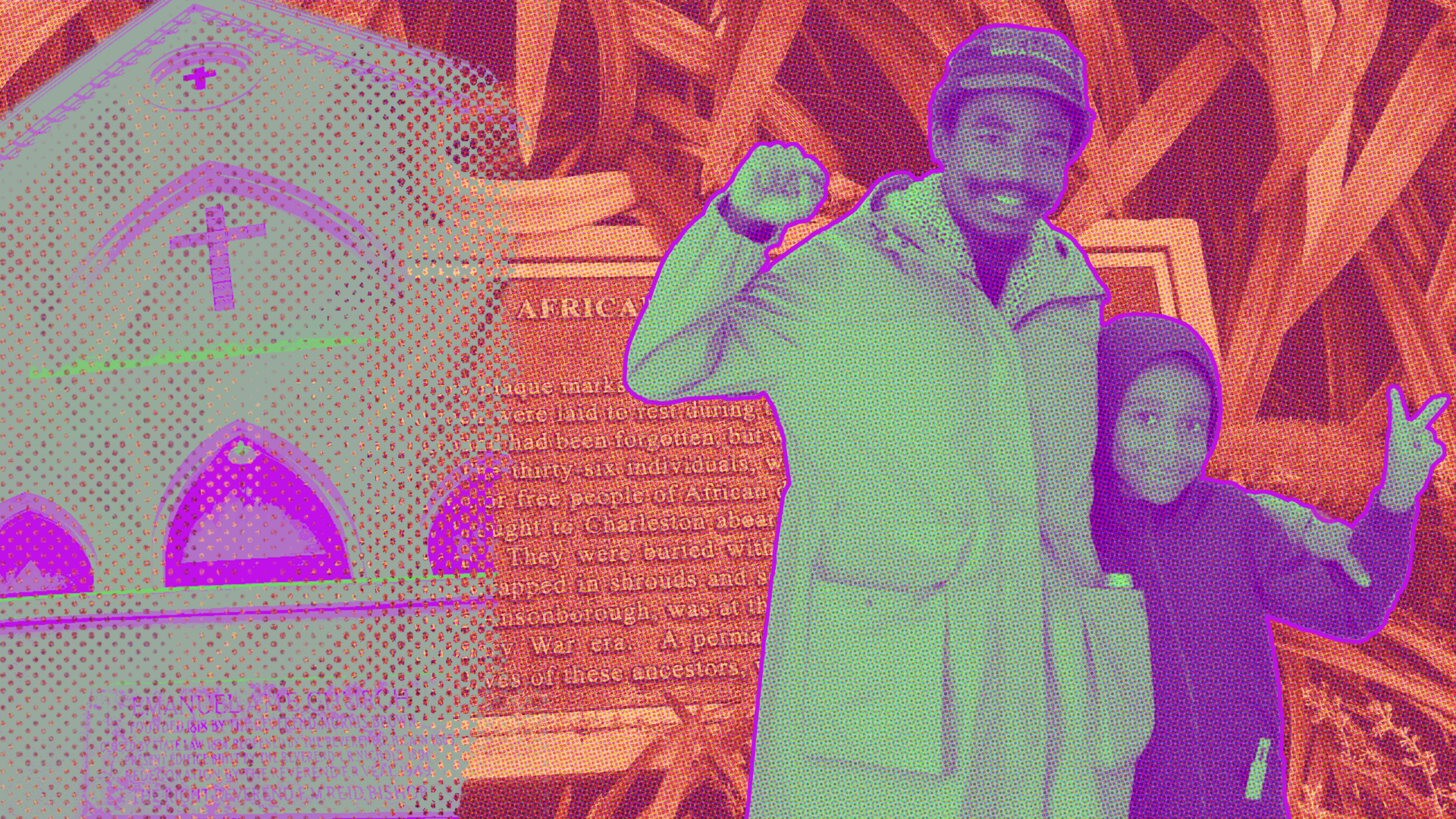I almost didn't meet Marcus McDonald on a rainy fall day in Charleston, South Carolina. Wind gusts were strong enough to flip umbrellas and sweep them down the street, a far cry from the sunny, mid-70s days that Charleston typically delivers in October. Though conditions weren't ideal for a walking tour, I asked if we could push through. I wanted to learn as much as I could about Charleson's Black history for the short while I was in town. And there couldn't have been a better teacher than my tour guide, Marcus McDonald, who is both steeped in his community's history and dedicated to advancing it.
As we walked down King Street, the busiest tourist area of the city, we stopped in front of 18th-century Italianate and Federal-style buildings to learn about historic firsts. My son and I clutched our umbrellas, trying not to get too wet as we headed to Marion Square.
Leading Black history walking tours is a side hustle for McDonald, who received his tour certification from the National Association of Interpretation. He's lived in the city for about 10 years. Still, his ancestors tie his family's presence there as far back as 1890. According to family records, they worked as cigar rollers and seamstresses shortly after emancipation. Today, McDonald works as a co-organizer for an art advocacy group called TINYisPOWERFUL, but he's most well-known as the lead organizer for Black Lives Matter Charleston.
Today, McDonald works as a co-organizer for an art advocacy group called TINYisPOWERFUL, but he's most well-known as the lead organizer for Black Lives Matter Charleston.
BLM Charleston has protested against many things, including police murders. McDonald said it's important to continue working across communities to fight fascism and the current president, Donald Trump, even if a higher percentage of the local people voted him into office.
"If you're not white, they're going to cut you out, you know what I mean?" McDonald said. "That ain't how communities work. We don't live in silos. [Trump is] about to dismantle public education. There's a lot of Black women in public education who rely on the grants to come from the public education system."
For now, BLM Charleston is focused on protesting book bans, censorship of Black history in the public school curriculum, and challenging the loss of diversity in the workplace.
In January 2024, three months after returning home from Charleston, I learned there had been a protest of President Biden's campaign speech inside Charleston's Mother Emmanuel AME Church. I stopped what I was doing to confirm my hunch: McDonald had participated in it in some way.
I soon learned that not only had he participated, but that the disruption by BLM Charleston and Free Palestine Charleston was planned in McDonald's living room.
"It's funny," he said. "I role-played as the interrupter. It's funny that I didn't even get in but Tamada ended up being the interrupter because we didn't even practice that."
McDonald said that the Secret Service stopped him at the second checkpoint inside the church, but since his fellow protesters made it in, he worked outside to support them as they carried out the disruption as planned. Working with Free Palestine Charleston is one of the many ways he builds solidarity with other radical movements.
"Mother Emanuel is my great-grandmama's church. I've been going there since I was a little kid. My great-grandmama was, like, 103, or 102 when she passed and Reverend Clementa Pinckney, who was still alive at that time, gave her eulogy," McDonald said. "I don't like how people play with it because I came down to Charleston right after the massacre. I've seen how it gets politicized by white people in ways that I don't fuck with, specifically with Biden and the ongoing genocide, even though now there's a ceasefire."

While on his tour, McDonald walked with us in front of Mother Emanuel, sharing both its notable history as the oldest AME church in the South and his personal ties to it. The activist Denmark Vesey, hanged for plotting an extensive slave insurrection in 1822, had been a founding member and the church has long been held up as a pillar against white supremacy and oppression.
Each step through Charleston's Historic District felt as if there were notable stops around each corner, including at Marion Square, just a two-minute walk away.
A historic stop: Charleston's Marion Square
I leaned against the Francis Marion hotel building, underneath the awning and away from the rain that had now become a light drizzle. We spent the first 40 minutes of the tour walking to the corner of King and Calhoun Streets, where McDonald shared some history about Marion Square, a central gathering place for Charlestonians today.
Marion Square was built in the 1820s, with its Old Citadel originally built in response to Denmark Vesey's planned slave insurrection. The crisscross sidewalks that are still in use today were designed to mimic the bars of the Confederate flag.

Surviving Fascism
Lessons from Jim Crow
The Baseball Riot of 1869
Before the Civil War, city police in Charleston had been armed in order to intimidate enslaved people, but the Army, based in the Citadel on the north end of Marion Square during Reconstruction, had stripped the police of their guns.
In July 1869, an argument broke out on Marion Square between a police officer and a biracial man in the crowd for a baseball game between Charleston and Savannah. When police tried to arrest the man, he resisted and other Black men stepped in to aid his resistance. As word spread of the fighting between Black folks and the police, nearly 3,000 Black Americans made their way to Marion Square and the surrounding streets. They continued protesting through the streets as a Savannah band played Dixie–a song deeply tied to the antebellum South. The protests continued until the Savannah team boarded their steamboat to take them back to Georgia.
In the aftermath of the uprising, Charleston police began carrying guns and they've been armed ever since.
When McDonald and others organized a protest in Marion Square against the in-custody killing of Jamal Sutherland in 2021, they faced a Charleston police force which by that time had been armed for more than 150 years.
When the International African American Museum opened in Charleston in 2023, its American Journeys exhibit included a video of McDonald discussing the protest and his physical altercation with police.
"It gives some solace to me, and I know a lot of other organizers who maybe think this way, that since this has happened for so long, it's good to study and see what we can do to organize it. Even if you don't find the solution, that ain't your fault, because it's been here since before you. This predates you, but it is your duty as somebody living in this iteration to do something against it if you don't rock with it," McDonald's said.
"Even if you don't find the solution, that ain't your fault, because it's been here since before you. This predates you, but it is your duty as somebody living in this iteration to do something against it if you don't rock with it."
Honoring history with action
One of the final stops on my tour was at the Anson Street African burial ground. A small plaque distinguishes the place where at least 36 enslaved people were buried in the 18th century. McDonald poured libations to these ancestors and asked us to join him in honoring them.

McDonald's love for history and community activism was inspired by his grandfather, Frank Houston. He was the family's historian with a study full of Black history books in his home.
By the time McDonald was in third grade, Houston was making him write extracurricular book reports on world-renowned artist and blacksmith Philip Simmons. Two years later, McDonald was writing about the Haitian Revolution.
When McDonald was a teenager, he accompanied his grandfather to pass out snacks in voting lines, something his grandfather had been doing as far back as the 1960s. In 2020, McDonald took a more formal role in community organizing when he started BLM Charleston.
Whether you're walking with McDonald on his Black history tour, or working on a community event, he carries the history of Black Charleston with him.
"If you study history, you care about history, be that real-life, historic person," he said. "You don't have to be the one person, you can be part of a group. Be part of the group that leads us into a better way."

